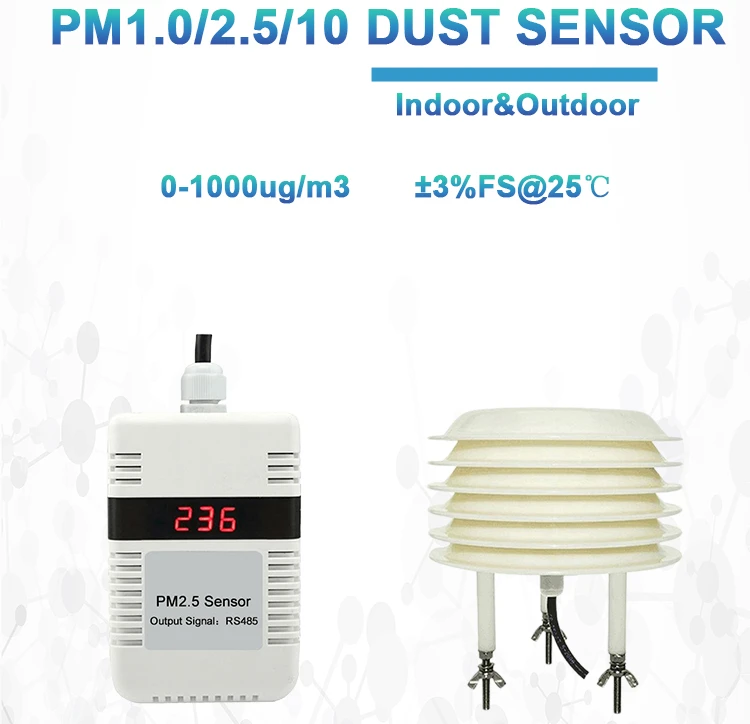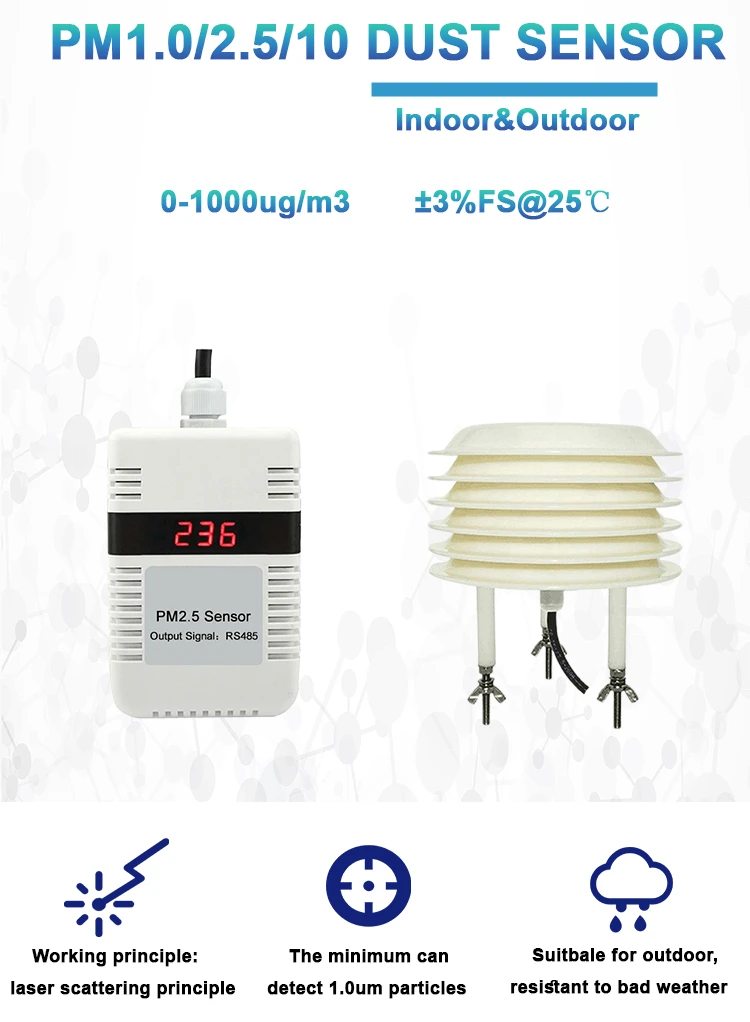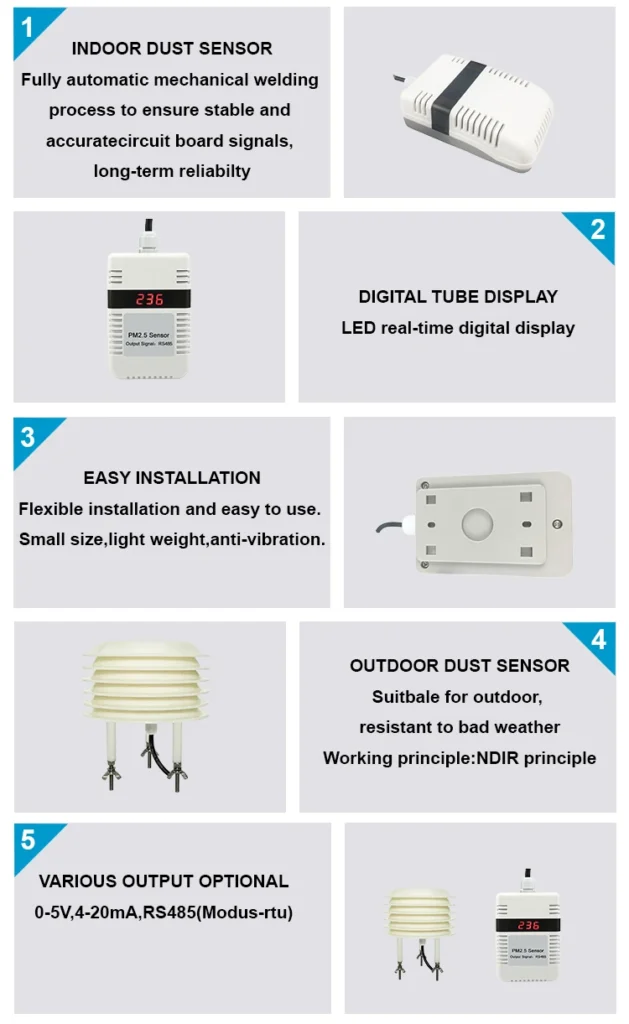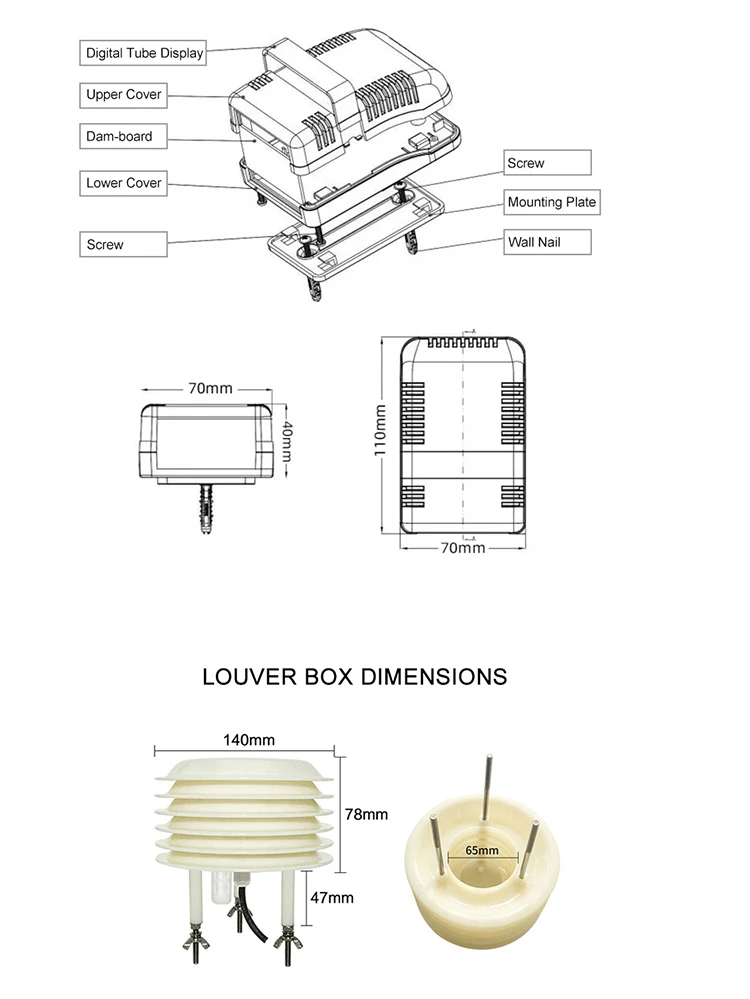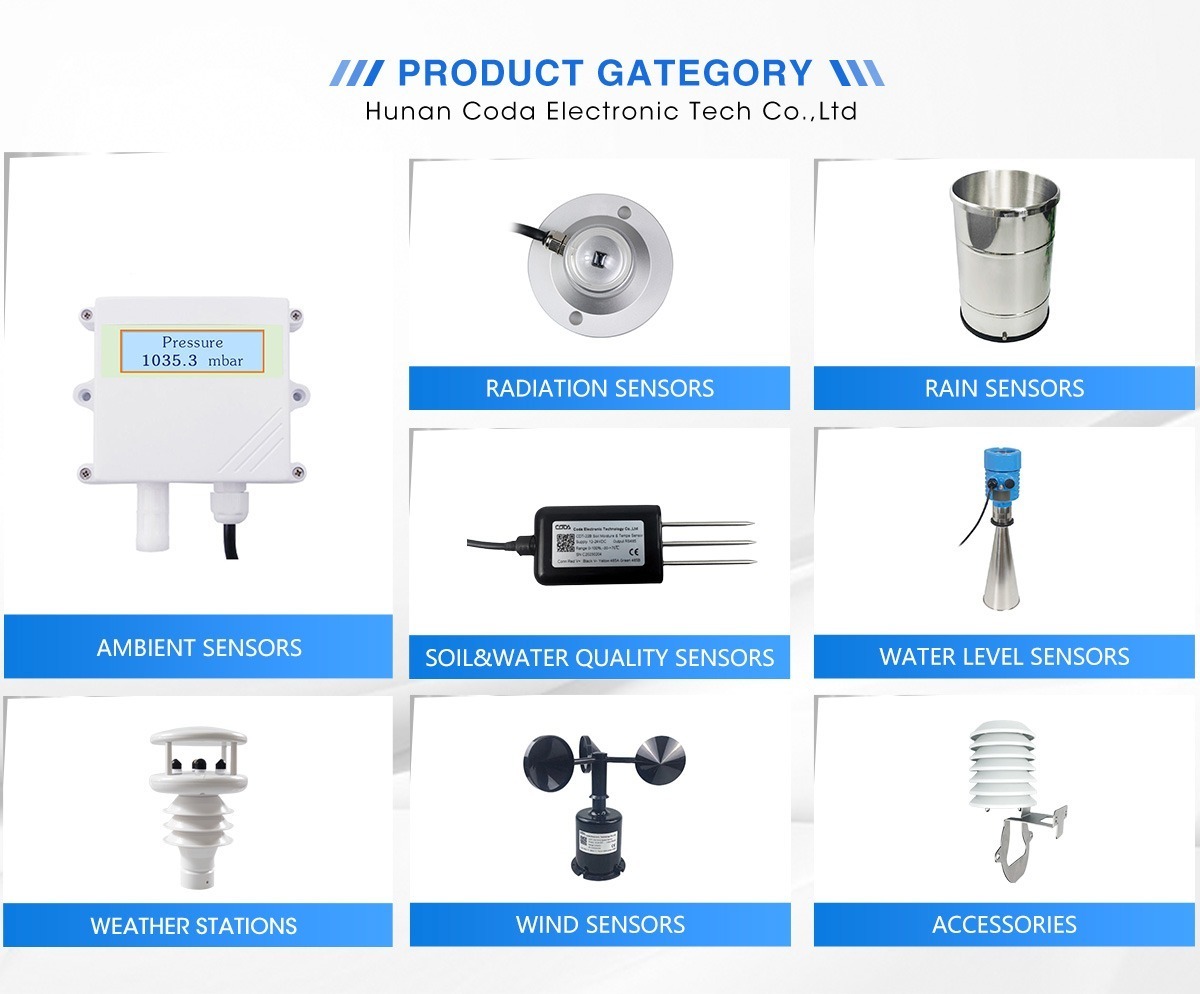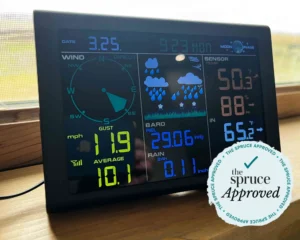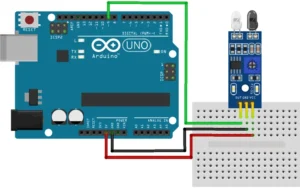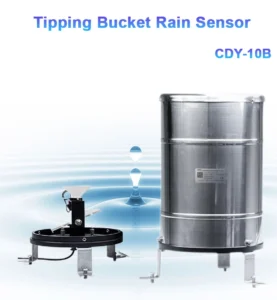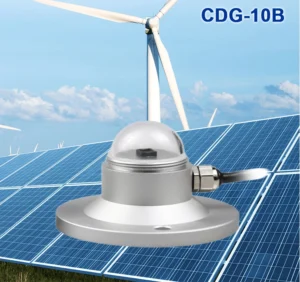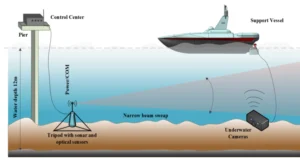What exactly is a PM10 Sensor?
1.In-depth Explanation of PM10
1.1Definition
A PM10 sensor measures small particles that are 10 micrometers wide or less. People often call these suspended particles dust. Their small size helps them stay in the air.
People can breathe these particles into their lungs. This can lead to health problems, such as breathing and heart issues. Particulate Matter 10 comes from many natural sources:
Natural Origins: Sandstorms, volcanic eruptions, and similar events.
Human Activities: Emissions from industries, vehicle exhaust, road dust, farming, and more.
1.2 Explanation
A pm10 concentrations detector is a tool that measures PM10 particles in the air. It tracks Particulate Matter 10 levels in real-time. This data helps with managing the environment and protecting health.
2. PM10 sensors generally operate based on one of these principles:
2.1. Light laser scattering Principle:
– Principle: The particulate matter sensor sends out a laser or LED light. When particles in the air go through this light, they scatter it. The angle and strength of the scattered light show the size and amount of the particles.
– Advantages: It is very sensitive, responds quickly, and can measure a wide range of things.
– Disadvantages: It needs controlled conditions. The optical parts need regular maintenance and cleaning.
2.2. Beta Ray Absorption Principle:
– Principle: This method checks how much Particulate Matter 10 particles take in beta rays. This is directly related to how much they have.
– Advantages: Gives accurate measurements and is great for long-term tracking.
– Drawbacks: It needs more costly equipment and makes operations harder.
2.3. Gravimetric Approach:
– Principle: A certain amount of air is taken as a sample. The weight of the particles is measured to find out how many there are.
– Pros: Accurate measurements. Great for labs or situations that need high precision.
– Cons: It is large and not good for portable devices.
3. Role and Importance of pm sensor
3.1. Health Surveillance:
Evaluating Health Effects: Sensors track PM10 levels. They help us see how air pollution affects our health. This helps in taking protective actions.
Warning Capability: When Particulate Matter 10 levels go above a set limit, the sensor can send an alert. This alert tells the authorities and the public to act. It aims to prevent problems.
3.2. Environmental Oversight:
Data Provision: PM10 detector provide important data that support environmental conservation and pollution management efforts. This helps create and assess environmental rules.
Continuous Monitoring: It checks airborne particle levels all the time. This gives environmental groups fast and accurate data.
3.3. Public Health Protection:
Mitigating Hazards: These sensors alert us when Particulate Matter 10 levels are too high. This helps lower health risks from air pollution.
3.4. Scientific Investigation:
Research Support: PM10 detector give important data for studying the atmosphere and the environment. They help researchers learn how air pollution forms, spreads, and affects the environment.
3.5. Industrial Uses:
**Emission Surveillance**:
In factories, mines, and other industrial areas, sensors check dust levels. This helps keep workers healthy and safe.
– Environmental Adherence: PM10 sensors help companies meet environmental rules and reach their sustainability goals.
3.6. Integration with Smart Devices:
Automated Management: You can add these sensors to air purifiers and smart home systems. They help check and control indoor air quality on their own.
– User-Friendly Design: The PM10 detector has an easy interface and a clear display. This makes it simple to use.
4. Use Cases for probes
4.1. Monitoring Public Environments:
Urban air quality standards monitoring stations are part of city-wide systems. They give up-to-date information about the environment.
Public places like parks and schools need to track ambient air quality standards. This helps keep people healthy.
4.2. Monitoring Health at Home:
Home Air Purifiers: They check indoor air quality and change purification settings on their own.
Smart Home Systems: They check air quality in real-time and make automatic changes for a healthier home.
4.3. Monitoring Industrial Environments:
Factories and Mines: We check air quality during production to follow health and safety rules.
Construction Sites: Controlling dust pollution and following environmental rules.
4.4. Research Facilities:
Universities and research labs run experiments. They also check levels of particulate matter pm for scientific studies.
4.5. Meteorological Stations:
Multi-Sensor Weather Stations: They provide air quality data. This helps with weather prediction and research.
4.6. Traffic Management:
Transportation Pathways, Airports, and Harbors: Looking at how traffic emissions impact air quality. This also aids in navigation and traffic management systems.
5. Selecting the Appropriate PM10 probe
When choosing a Particulate Matter 10 detector, think about some key factors. These include how well it works, what you need it for, the environment, and your budget. Here are some key points to think about:
5.1. Measurement Precision and Consistency:
Pick a sensor that has high precision for accurate PM readings. Common measures of precision are relative and absolute errors.
Make sure the sensor stays stable over time, especially in outdoor or tough conditions. Check how temperature and time affect its performance.
5.2. Measurement Capacity:
Check that the sensor can measure pm10 and pm2.5 levels that fit your needs. It usually goes from 0 to 2000 µg/m³ for Particulate Matter 10.
Smallest Detectable Particle Size: Consider the smallest particle size the sensor can detect, which is 0.3 µm.
5.3. Operational Environment:
Temperature and Humidity: Make sure the sensor works well in the expected conditions. This means temperatures can range from -20°C to +60°C. Humidity levels can vary from 0% to 99% RH.
– **Dust and Water Resistance**: If you need a sensor for outdoor or industrial use, pick one with a high protection rating. Look for ratings like IP65 or higher.
5.4. Communication Interface:
– Output Form: Choose the suitable output interface for your data acquisition system, like RS485, 4-20mA, or analog voltage outputs.
– Wireless Communication: For remote monitoring, use sensors that can connect wirelessly. Options include Wi-Fi, LoRa, or Bluetooth.
5.5. Energy Usage and Power Source:
Energy Use: Pick sensors that use less energy. This is important for devices that run on batteries.
Power Source: Check that the sensor works with your power system. This can be DC 12V, 24V, or other custom power options.
5.6. Setup and Upkeep:
Setup Type: Check if the sensor is meant for wall mounting, pipe mounting, or if it is portable.
Upkeep Needs: Choose sensors that need little maintenance or are maintenance-free. This will help lower ongoing costs.
5.7. Unique Features:
Temperature Adjustment: Some advanced sensors can adjust for temperature. This helps keep measurements accurate in different conditions.
Select sensors that can check their own status. This helps you find and fix problems quickly.
5.8. Expense and Financial Planning:
Cost: Choose a sensor that balances performance and your budget. Make sure it does not lose important features or reliability.
Overall Ownership Expense: Don’t just think about the purchase price. Also consider the costs of installation, maintenance, and replacement.
5.9. Brand and Post-Purchase Assistance:
Brand Image: Pick well-known brands that have a good reputation in the market.
Technical Assistance: Ensure the provider gives good technical support and services after you buy. This is important for fixing problems and dealing with challenges.
Example of Selecting a PM10 Sensor:
Identify the application you need. This could be for monitoring the environment, industrial production, or home health. Also, note the needed measurement precision, range, and environmental conditions.
Narrow Down Sensor Options: Based on these criteria, remove sensors that do not meet the requirements.
Evaluate Parameters: Check technical details such as accuracy, stability, energy use, and communication options in different models.
Engage with Suppliers: Reach out to suppliers for more comprehensive information and user feedback.
Test Samples: If you can, buy a few samples to test. This will help make sure the sensors fit your needs.
Make the Final Choice: After looking at everything, choose the best Particulate Matter 10 probe.
Conclusion
PM10 refers to particles that are 10 micrograms per cubic meter wide or smaller. These particle pollution can harm human health and lower visibility in the air. A Particulate Matter 10 detector measures the amount of these particles in the air. It uses methods like light scattering, beta ray absorption, or weighing techniques.
These sensors are vital in health surveillance, environmental management, scientific studies, industrial uses, and smart device integration. Using a PM10 detector helps us understand and control air pollution. This protects public health and keeps the environment safe.
